This building was named for John O’Daniel, a leader and advocate in his community. O’Daniel was once enslaved by J.S. Carr. Despite this, he went on to become the first African American landowner in Durham. He was faithful and true in every facet of life.
In 1930, the building became the Farmer’s Exchange, a farmers cooperative. It housed Durham’s first farmers market, referred to as a “curb market,” that was operated exclusively by women.
Today, the building is known as the John O’Daniel Exchange. Located at 801 Gilbert Street, we provide affordable office space and a community atmosphere for small businesses and nonprofits near downtown Durham, NC. We are thrilled to use our event space for intimate weddings, special events, and corporate events to serve our community!
Lisa Williams, Venue Manager
Lisa started to work events as an onsite manager in 2017 and quickly realized she had a passion, drive, and desire to make people happy and to be sure clients had an amazing experience at the Durham Exchange. Working her way up, she now manages our venue. She loves to show people our beautiful historic building and likes to share her knowledge of the history of our building. She will greet you with a warm smile and truly make you feel at home the minute you walk in the venue.
After working in the medical field for 17 years as a front desk manager, she knew that there was something else, something more that she wanted to do. Her ability to make you feel comfortable and at ease when you are planning your event at The Durham Exchange is remarkable. She will help with problem solving and brainstorming ideas for your event and make it so easy for you.
Outside of the office, you can find Lisa spending time with her family. She has 5 girls and just recently 2 grandsons! Originally from Michigan, Lisa enjoys traveling there to visit family and friends. She also loves to travel with her husband to new places and experience new things! Staying active, Lisa enjoys playing recreational sports such as Beach Volley Ball, Kickball, Soccer, and Softball.


Madeline Bailey, General Manager
After managing restaurants for 10 years (starting in the bakery and working up to general manager), Madeline brings a keen ability to adapt to circumstances and understand people, which makes her team love working with her through the exciting challenges of each day!
With a sharp mind for problem solving and a clear communication style appreciated by our clients and team members alike, Madeline keeps the day-to-day operations running smoothly.
Outside of the office, you can find Madeline hanging out with her husband Braxton and her energetic daughters, Violet and Rose. Madeline is a working mom who knows and appreciates the value of having time to do the important things with the people and pets that you love.
Madeline loves going out in nature and can often be found hiking at Umstead Park, riding the merry-go-round at Pullen Park, walking her dog, or going to the zoo.
The building began with the name the Paragon Hosiery Mill. It quickly changed names to the Bowling-Emory Knitting Mill, before coming into the ownership of industrialist Julian S. Carr. The early twentieth century was the height of the cotton production era, and 801 Gilbert Street became part of the ever-expanding Durham Hosiery Mill campus. The building is named for John O’Daniel, known as Carr’s “right-hand man,” servant, and later, trusted mill manager. John O’Daniel was the first African American landowner in Durham.
Cotton gave way to silk; the mill gave way to something new: The Farmer’s Exchange. Durham’s first Farmers Market found its home here in the 1930s. This Farmers Market was operated exclusively by women. The Farmer’s Exchange was a center of entrepreneurship, provision, and community growth. The red masonry brick industrial-style building was the stage for conversations, negotiations, and transformation.
From the 1950s to the 1980’s the building remained a significant site of commerce in Durham, NC. It was abandoned for several years until, in 2007, when entrepreneur Wendy K. Clark restored it to its former beauty. This transformed a piece of Durham history into a place of hope and celebration, a place to exchange of vows and ideas. 801 Gilbert Street currently houses nonprofits, serves minority businesses, and exists to impact systemic poverty. So, the building once again provides for and serves its community.
Write your own epic story. Listen for the train, the laughter, the conversations, and become part of history. Let this be the backdrop for your landmark event!
Renovations on the The John O’Daniel Exchange began in 2007. The building officially opened two years later, in 2009. Once a blighted building in a struggling part of the city, The Exchange has become a unique place where people of varying backgrounds and skill-sets can gather, connect, and impact the surrounding community in a positive way.
Much of the information shared here is provided by Gary Kueber (www.endangereddurham.org) and used with permission.
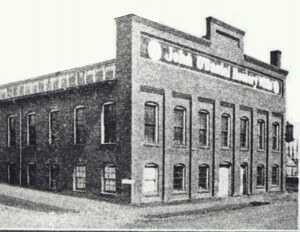
The John O’Daniel Exchange started life in the late 1910s as the Paragon Hosiery Mill. It quickly changed names and became the Bowling-Emory Knitting Mill for a very short period of time before being acquired in 1919 by Julian Carr as part of his expanding Durham Hosiery Mills.
From Kueber: “Carr named the mill after the recently (1917) deceased John O’Daniel – who the Historic Inventory euphemistically refers to as a former “servant” (rather than a slave) in the Carr household. By all accounts, the relationship between Julian Carr and and John O’Daniel was an interesting one. O’Daniel is referred to in several accounts as Carr’s “right-hand man.” Carr was one of the first to take the then-unconventional step of hiring African-American labor in his mills. The offensive belief of the time, according to Jean Anderson, was that “[B]lacks were incapable of running machinery.” One of Carr’s other mills was staffed and managed entirely by African-Americans.
Regardless, John O’Daniel was likely Carr’s ‘liaison’ in the African-American community, helping to hire and recruit. He was one of the earliest African-American landowners in Hayti – purchasing a tract on Fayetteville St. in 1877, and he later contributed financially to the building of St. Joseph’s.
O’Daniel’s relationship with Carr led some to spread the rumor that O’Daniel was actually Carr’s half-brother, which was never confirmed. Carr stated once that “John considered himself part of the Carr family.” Take that as you will. John O’Daniel is buried in Geer Cemetery (which he may have been part owner of.)”
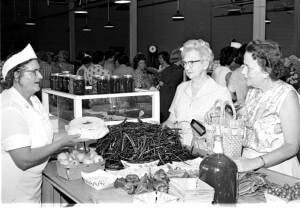
Unfortunately, the John O’Daniel Hosiery Mill was short lived as Julian Carr died in 1924 and John Sprunt Hill took over the waning mill. In 1930, Hill offered the mill as a building for the Farmer’s Exchange which was a cooperative that grew to 900 members by 1935. Durham’s first Farmers Market was located here in the 1930s and was operated exclusively by women! The women were able to provide an extra source of income for their families through the sale of poultry, eggs, baked goods, canned items, and fresh vegetables and flowers in season. Called a “curb market” at the time, it would later move to Foster Street in downtown Durham.
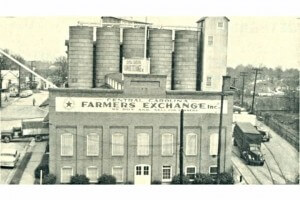
From Keuber: “By 1935, the Farmers’ Exchange had a chicken processing plant here, and soon thereafter (1937) had built a feed mill for processing and marketing grain just behind the site. The feed mill production continued to expand, taking over the former space of the Durham Gas Company, and later becoming the Southern States mill on Gilbert St. The Farmers’ Exchange also took over the former city stables at Gilbert and Alston. Financial statements from 1955 and 1956 shows that it was a significant place of commerce in our city.”
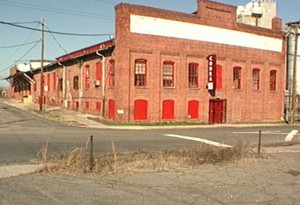
During the 1980s the Farmer’s Exchange was shut down and the building was vacant until the late 1990s. At that point the building was converted into a nightclub called “Cobra” which lasted all of a week until a mysterious fire burned off the roof.
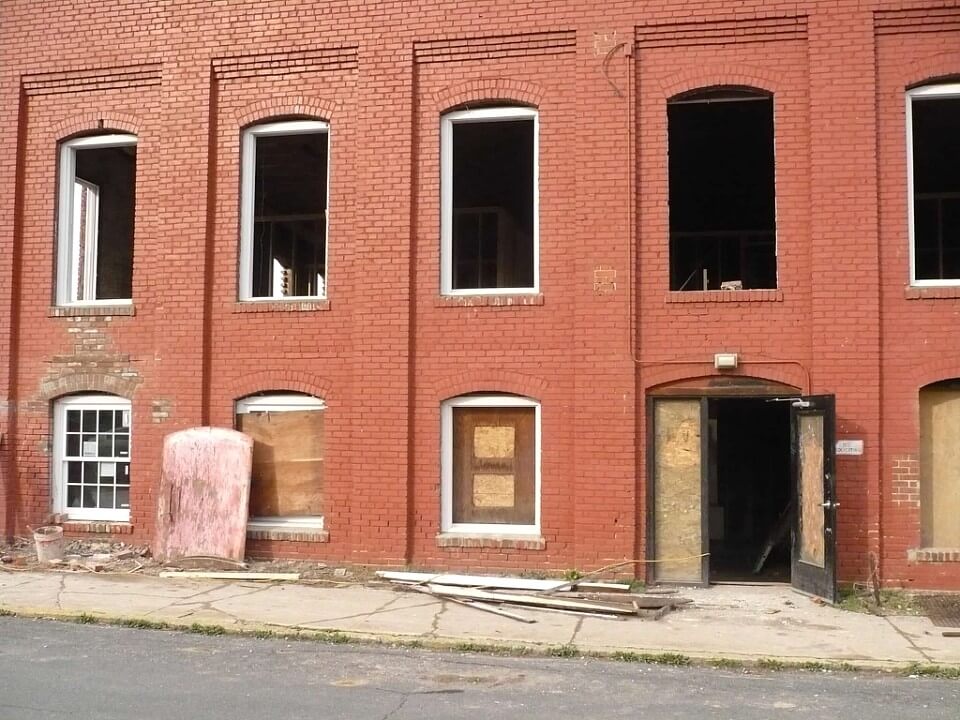
For most of the 2000s, the building sat abandoned and blighted. It was purchased in 2007 by Wendy Clark. She began renovations that would turn a forgotten piece of Durham history into the place of hope and community that it is today.